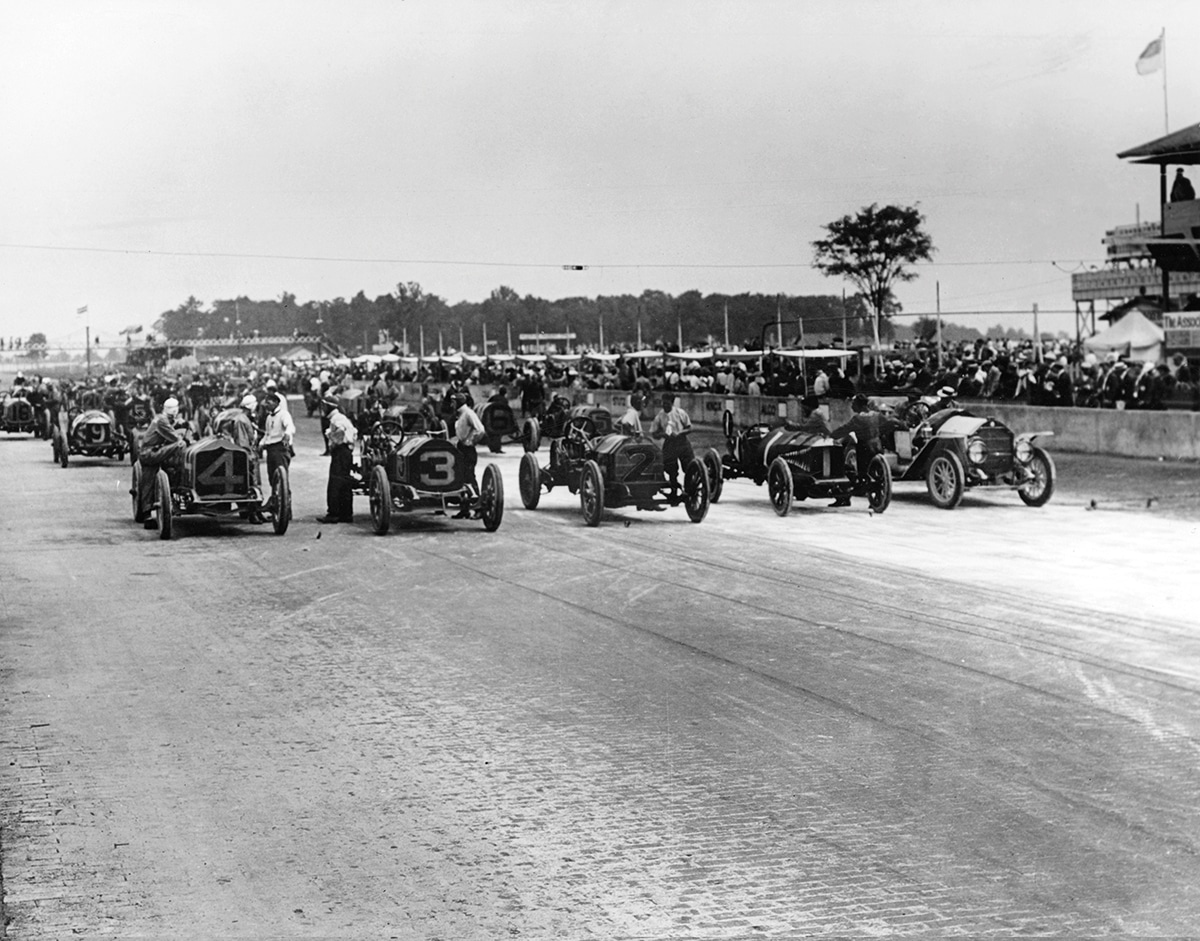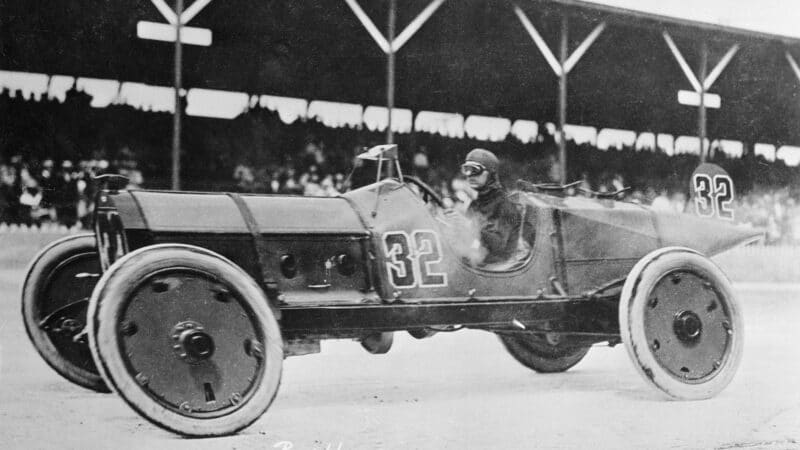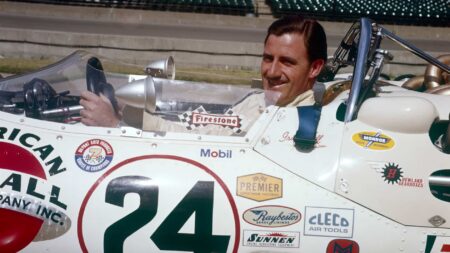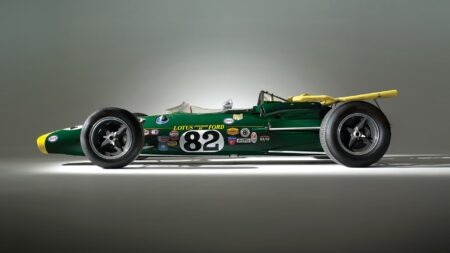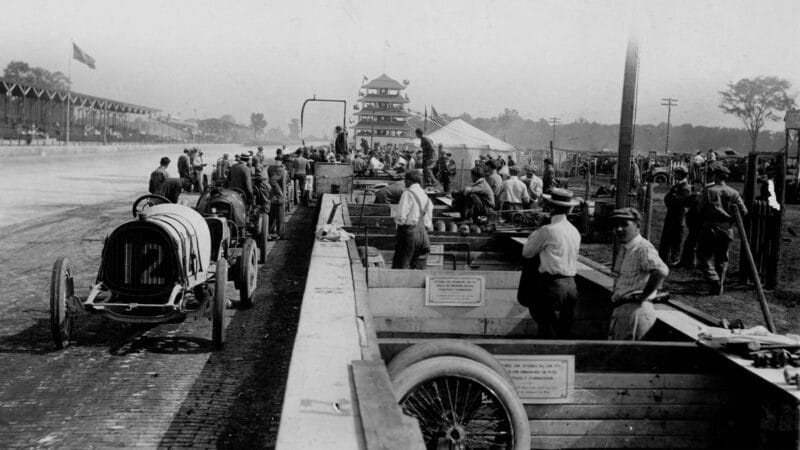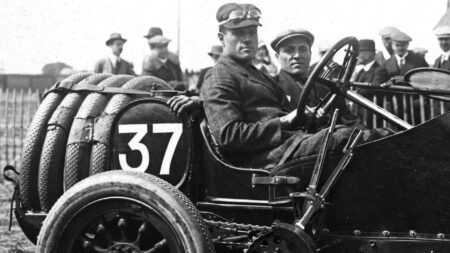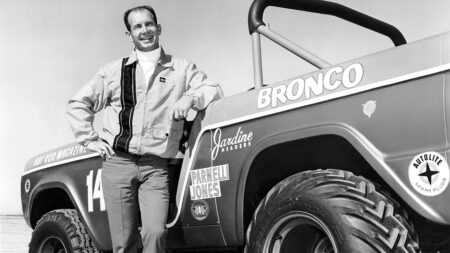“Cyrus Patschke,” Marmon replied, waving an envelope. “I have his letter right here, offering us his services.”
“You can get Cy Patschke?” the normally stoic Harroun asked excitedly.
“What do you say?” Marmon smiled. Harroun went to work grooming the Wasp for the long grind. At 7.8-litres, the six-cylinder racer was one of the smallest displacement cars in the race. Most cars carried a riding mechanic, but the AAA (American Automobile Association) had no mandatory rules on two-seater machines. In order to save weight and tyre wear, Harroun designed the Wasp with a single-seat cockpit. Weighing in at 28651bs, the yellow and black point-tailed racer was considered a lightweight.
At age 23, Pennsylvania’s Cy Patschke was already a veteran of long distance racing. He specialised in a series of gruelling 24-hour races held at the Brighton Beach one-mile horse track in Brooklyn, New York.
In 1909 at Brighton, Patschke was teamed with ‘Smiling’ Ralph Mulford. The pair wheeled a Lozier to an outstanding victory, covering a record 1196 miles in 24 hours. The following year, ‘Patch’ and Al Poole throttled a Stems to victory in the last round the clock run at Brighton. When he arrived at Indy, Patschke’s reputation had preceded him.
During practice for the first Indy 500, Harroun soon discovered the Wasp was not the fastest car at the Brickyard. But he also learned that the faster cars peeled the tread from their tyres when averaging over 75mph. Harroun won many a race by running just off the pace, saving his car for the final finishing dash. On one run, Patschke lapped at over 80mph. But Cy agreed the average speed should not be above 75mph for the 500 miles — unless there was an emergency. Patschke was to relieve Harroun at around 150 miles. The Marmon camp considered Mulford’s Lozier and David Bruce-Brown’s Fiat the main competition.
